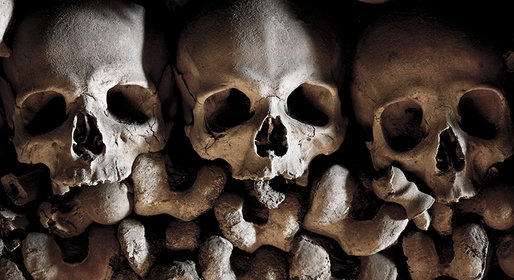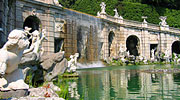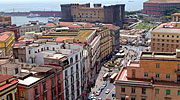Naples' Fontanelle Cemetary
History and legends of the most impressive ossuary in Italy
Just as many modern holidays in Italy are a mix between Catholic and ancient pagan rites, so too are the traditions surrounding the laying to rest of the deceased. Somewhere in the grey area between religion and folklore, at times more superstition than faith, funeral rites and customs are often a perfect example of the blending of sacred and profane. Take, for example, Naples' Fontanelle Cemetary...
Located in the Sanità quarter of the city, the Cimitero delle Fontanelle is a historic ossuary holding the remains of more than 40,000 victims of plague and cholera which swept through the city in 1656 and 1836, respectively. The burial site immediately makes a dramatic impact, as a perfect, otherworldly silence envelopes the 3,000 square meters carved from the yellow tufo stone saturated with history and legend. Lined up on the ground along the perimeter of the three trapezoid-shaped naves, fitting together like the perfect pieces of a macabre puzzle, are thousands of capuzzelle, as the Neapolitans call the skulls of their deceased.
The name Fontanelle is derived from the numerous springs and water fountains in this area of the city.
The Three Naves
The ossuary is divided into aisles so wide that they are commonly described as naves, each named according to its original function; at the entrance, the church of Maria Santissima del Carmine was built in the 1800's and used for celebrating Masses until the end of the 1980's.
The left nave is known as the priests' nave as it holds remains originating from consacrated ground. Walking down the nave, visitors pass the chapel dedicted to Gaetano Barbati, canon and leader of the first groups of the faithful who worked to lay to rest remains of the dead. At his feet, there is a coffin containing two skeletons, which, according to legend, are the remains of a young couple linked to one of the most famous "capuzzelle" in the cemetary: il Capitano.
According to legend, a young bride was once so devoted to the "capuzzella" of a captain that her groom became jealous of her attentions and drove a bamboo stick through the skull's eye socket, challenging the lifeless bones to show themselves at his wedding. On the wedding day, a gentleman dressed as a police captain was among the guests. The groom asked the stranger to identify himself, and the captain replied that he had been invited by the groom himself, after having been blinded by him in one eye. With this, he disrobed and showed himself to be bare bones; the bride and groom dropped dead of shock.
Continuing to the left, the chilling figure of the "Monacone" soon comes into view, the headless statue of San Vincenzo Ferrer dressed as a Domenican friar. Further on, the Tribunale is marked by three crosses with skulls at their bases in the entrance.
The central nave is known as the navata degli appestati as it holds the remains of victims of the terrible plague epidemic which struck the city. The sheer mass and volume of the ossuary contents leaves visitors speechless, as they try to conceive of the terrible loss and suffering that produced so many bones that they were used to build the pediment of the chapel dedicated to the Resurrected Christ, which holds a representative statue inside.
The nave to the right is called the navata dei pezzentielli, as there lie the remains of those so poor that they did not have the funds for a proper burial.
The Cult of the "Anime Pezzentelle"
It was once common to "adopt" a skull, name, visit, and occasionally clean it, in the hope that the capuzzella would show gratitude by appearing in its guardian's dreams to reveal winning lottery numbers.
Older Neapolitans talk of the tradition, now prohibited, of the culto delle anime pezzentelle. Women would visit the cemetary to take care of specific skulls, sure that that the soul of the deceased would intervene from beyond the veil and send aid and good fortune their way.
These "lucky" skulls would be given a name, and often assigned a life history and role, entering into the family as if they were living people: the skull would be cleaned and polished, decorated with flowers, embroidered handkerchiefs, or, in cases of particular favors received and in particularly devoted or well-off families, 'placed in a small case inscribed with the name of the skull and the family which it protected.
Thanks to the family's devotion, the soul of the departed would appear in their dreams to reveal its identity and request prayers and devotion in exchange for intercession from beyond.
If the skull was particularly benevolent and "perspired" (the condensation caused by the humidity was interpreted as prayers answered), the devoted family members would visit with regularity, elevating the skulls to an almost "saintly" status. The skull of Donna Concetta is an example of this, unique because it was always gleaming.
This cultish practice was particularly popular during and directly after WWII, but was prohibited by the ecclesiastic court in 1969, which held it to be a pagan rite.
This site has been open to the public since 2010, after a peaceful occupation by the neighborhood residents was successful in its demands to reopen the ossuary.
Our Insider is
Could you be our next Insider? Share your love of Italy by contributing to ItalyTraveller! See how!




















